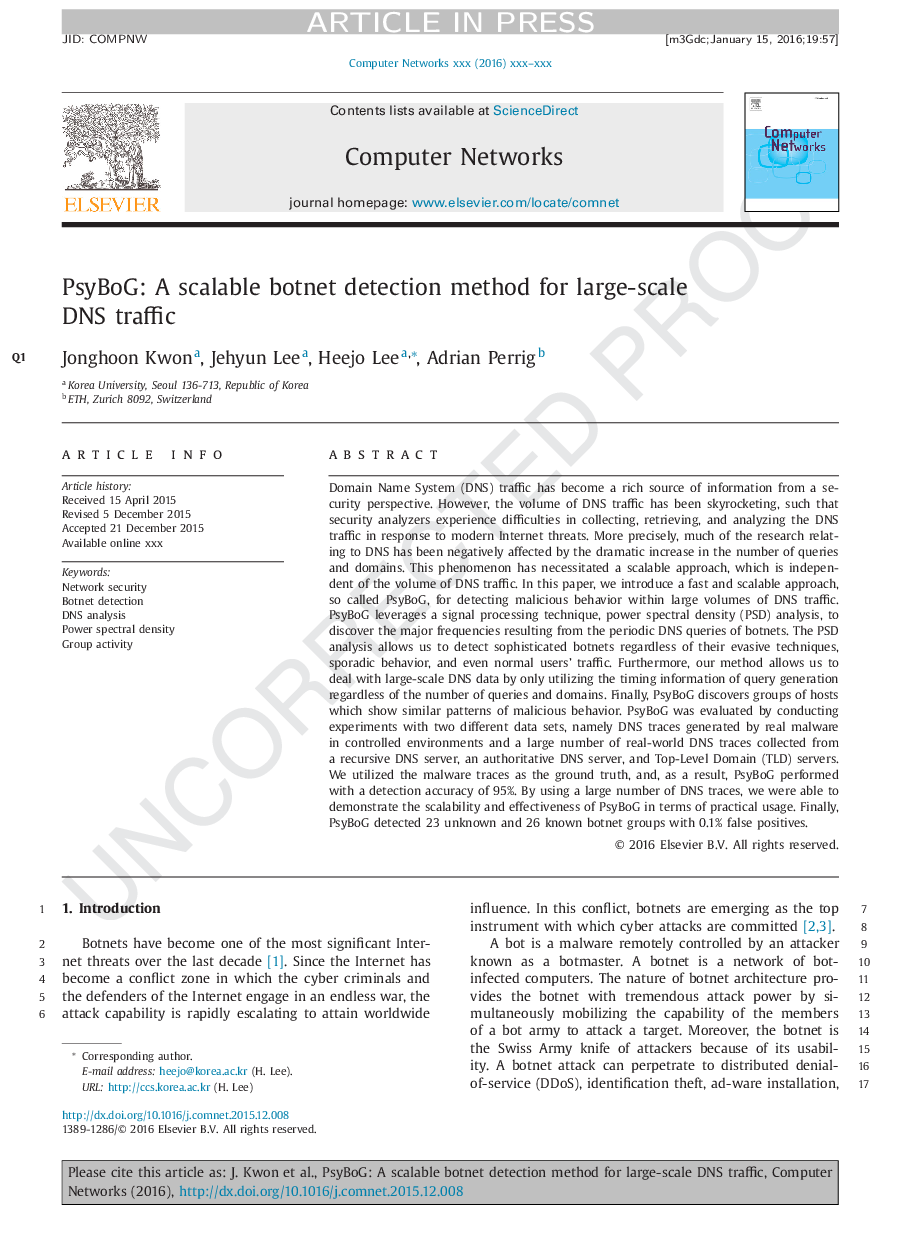| Article ID | Journal | Published Year | Pages | File Type |
|---|---|---|---|---|
| 6882953 | Computer Networks | 2016 | 26 Pages |
Abstract
Domain Name System (DNS) traffic has become a rich source of information from a security perspective. However, the volume of DNS traffic has been skyrocketing, such that security analyzers experience difficulties in collecting, retrieving, and analyzing the DNS traffic in response to modern Internet threats. More precisely, much of the research relating to DNS has been negatively affected by the dramatic increase in the number of queries and domains. This phenomenon has necessitated a scalable approach, which is not dependent on the volume of DNS traffic. In this paper, we introduce a fast and scalable approach, called PsyBoG, for detecting malicious behavior within large volumes of DNS traffic. PsyBoG leverages a signal processing technique, power spectral density (PSD) analysis, to discover the major frequencies resulting from the periodic DNS queries of botnets. The PSD analysis allows us to detect sophisticated botnets regardless of their evasive techniques, sporadic behavior, and even normal users' traffic. Furthermore, our method allows us to deal with large-scale DNS data by only utilizing the timing information of query generation regardless of the number of queries and domains. Finally, PsyBoG discovers groups of hosts which show similar patterns of malicious behavior. PsyBoG was evaluated by conducting experiments with two different data sets, namely DNS traces generated by real malware in controlled environments and a large number of real-world DNS traces collected from a recursive DNS server, an authoritative DNS server, and Top-Level Domain (TLD) servers. We utilized the malware traces as the ground truth, and, as a result, PsyBoG performed with a detection accuracy of 95%. By using a large number of DNS traces, we were able to demonstrate the scalability and effectiveness of PsyBoG in terms of practical usage. Finally, PsyBoG detected 23 unknown and 26 known botnet groups with 0.1% false positives.
Related Topics
Physical Sciences and Engineering
Computer Science
Computer Networks and Communications
Authors
Jonghoon Kwon, Jehyun Lee, Heejo Lee, Adrian Perrig,
